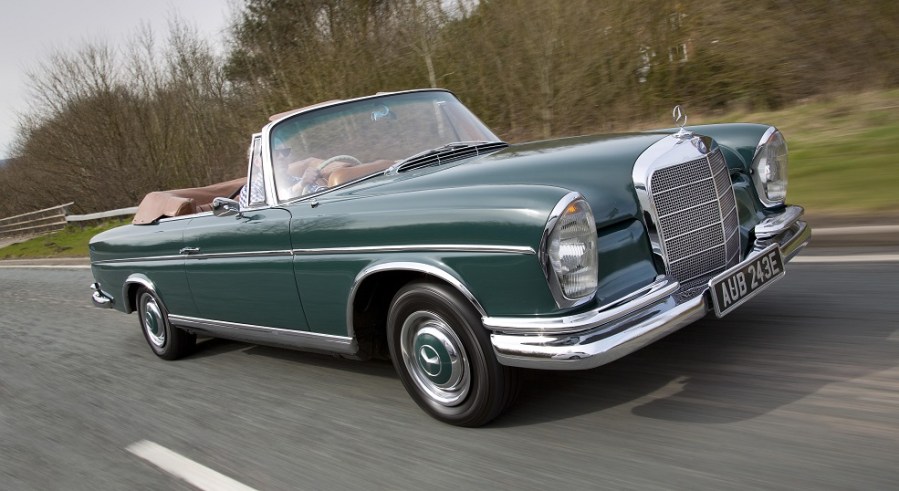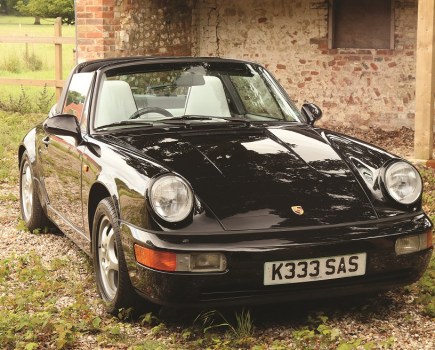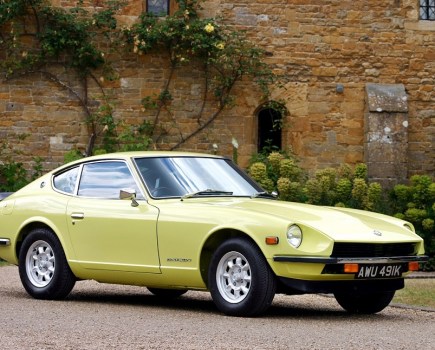Widely considered to be a golden era for the three-pointed star, the 1960s Mercedes have become highly prized classics with prices to match.
Mercedes W111/W112 S-Class (1959-1971)
Slightly smaller but just as finely appointed as the famous Adenauer models, the W111 and top W112 models can be considered as the beginning of the S-Class as we know it. They introduced a new design language for the 1960s, with upright headlights and finned tails, and have remained attractive to classic Mercedes enthusiasts ever since.
The coupes and convertibles, relatively rare in right-hand-drive, have always been more expensive than the saloons. Expensive when new, depreciation was slow and then by the 1990s they were quickly becoming recognised classics with the prices to match.
A Mercedes 220SE convertible might have been £15,000, although at this time the later W108/W109 models were already more desirable particularly with the powerful V8 engines. Saloons, meanwhile, were considerably less, at around £4000.
In the years since, the whole range has proved to be a slow burner of an investment. The coupes and convertibles have survived best, so now the saloons are quite rare but over the last few years there has been an uptick in restorations. This has levelled out values which, for saloons, now hover at about £4000 for projects and £15,000 for one in good condition. The exceptionally rare 300SE, under the W112 designation, is a collectors’ piece and can now be worth twice as much, or even more, as otherwise.
Prices for coupes begin at £20,000 in good condition, up only about 10 per cent from 2010, but moving quickly up above £50,000 for the right specification. Find a 300SE convertible or a 3.5-litre V8 model, introduced from 1969, and be prepared to pay £70,000-£100,000.
The bargain here, though, has to be the underappreciated saloons that seem to have been forgotten while later S-Class models are getting ever more expensive – even a 1980s W126 can be more expensive these days.
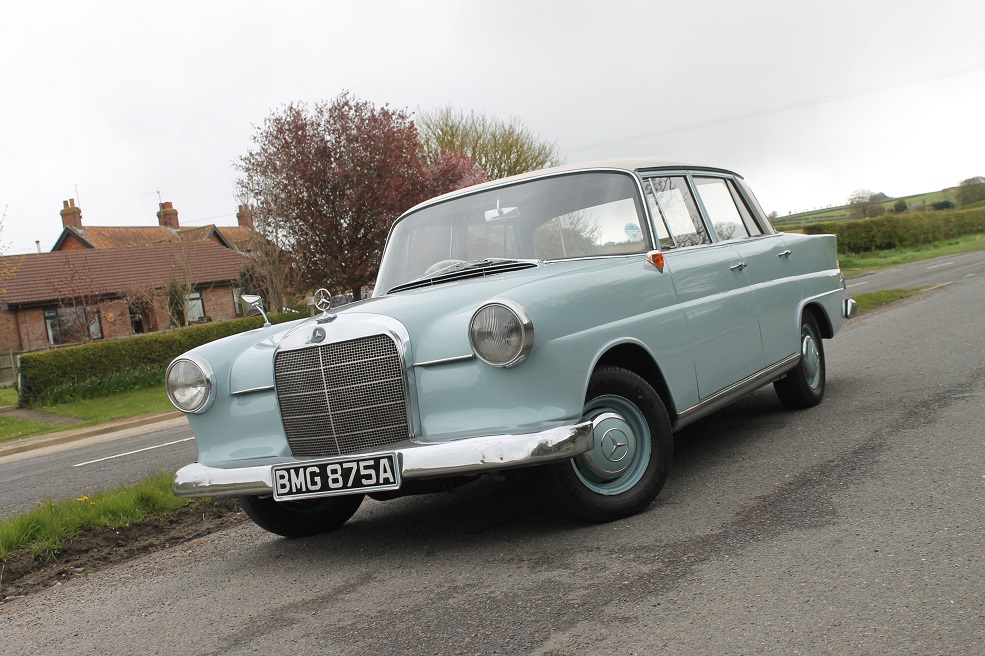
Mercedes W110 (1961-1968)
Although sharing the same body and chassis as the S-Class, the W110 was positioned as a lower-specification car with four-cylinder engines and the less stylish front lights by which it’s readily identified. Being the humble Mercedes, it never lit the market alight with big prices, but has proved to be a bit of a clever buy.
While the most glamourous Mercedes models got ever more expensive, most of the 190c and 190Dc, then post-1965 200 and 200D models have remained below £15,000. You can still buy into a project for £2500, something that might have been £1500 ten years ago, while a usable example will be around £6000 – hardly up from £5000 in 2010. The best are starting to edge higher, but still don’t attract the same amount of interest as the six-cylinder models. There was only one six-cylinder W110, the 230, which was sold in small numbers and does indeed command a premium.
The very best examples can be worth over £20,000 these days, which would have been £15,000 in 2015, but they often prove to be slow sellers. It appears that the W110 will remain a value proposition rather than rising star, and in fact its position as desirable but modest Mercedes classic has been usurped by the later W115.
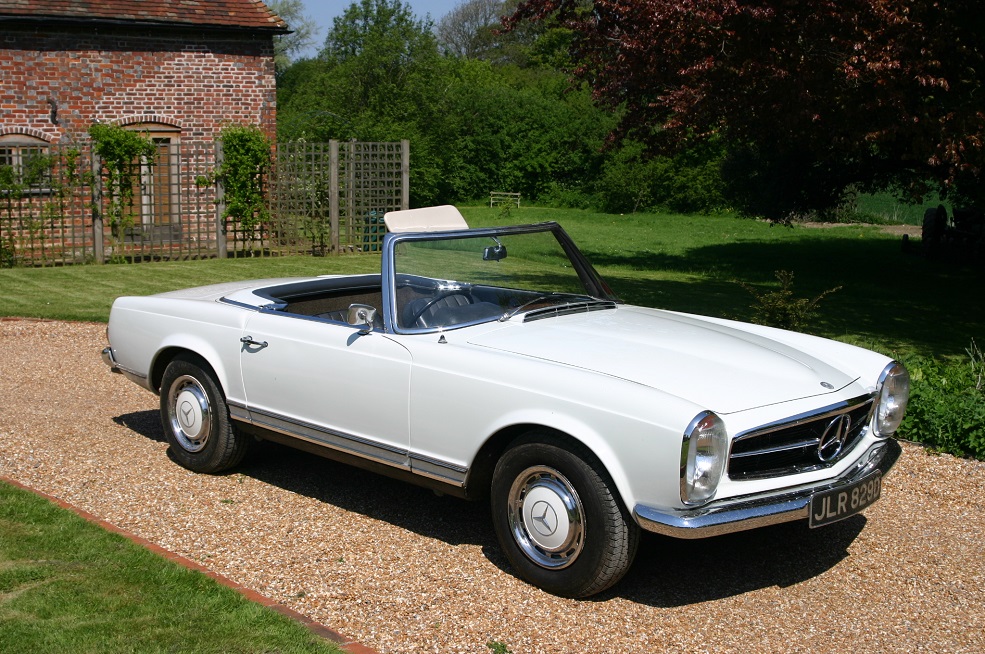
Mercedes W113 SL (1963-1971)
An immediate classic for Mercedes, the W113 ‘Pagoda’ SL had the style, luxury and build to set it apart and mark the SL’s unique genre out for years to come. It has become timeless, and while it was never a cheap car, in the past 20 years values have taken a sharp upwards turn.
From about £15,000 in the early 2000s, values have risen to anything above £50,000. In the past, it was the later 2.8-litre 280SLs that were most desirable, offering the most power, but lately it’s become the earliest 230SLs that are gaining the attention of a market now more populated with collectors. The Pagoda remains a highly usable classic, but stone-chipped examples run on modest budgets are far fewer than they used to be. Most of these were restored in the early 2010s as values began to rise from £30,000 to as much as twice that in a handful of years.
Today, exceptional cars can even tip over and above £100,000, while any car that’s well cared for should take £75,000. The later 280SLs are no longer the most desirable, and it is now all about originality or high quality restorations.
With 300SL gullwing prices at dizzying heights and its sister car the 190SL convertible not much more expensive than a Pagoda, we reckon there’s space for more action over the next few years.

